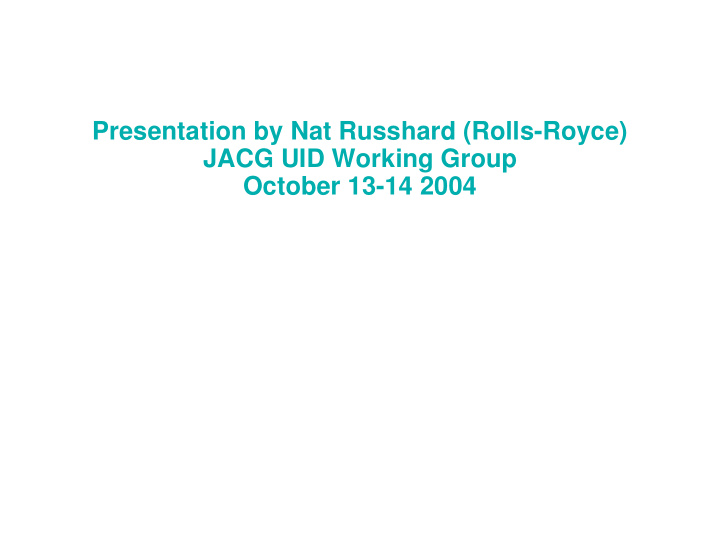



Presentation by Nat Russhard (Rolls-Royce) JACG UID Working Group October 13-14 2004
Machine Readable Identification - Impact � Rolls-Royce produce 1350 Gas Turbine engines / year � There are c. 20k components per engine � On the basis of 4 times = 108m times per year � Throughout the process from manufacture to new build, we read record and / or transcribe component part numbers / serial numbers 4/5 times QUALITY ESCAPES ARE A CERTAINTY WITH MANAUAL METHODS
Machine Readable Identification - Impact � 108m instances of 2 min/item = 3.6m hrs/yr � 4% of the Rolls-Royce population transcribe part information � This analysis neglects; Aftermarket/Repair and Overhaul. In service action. C class parts. Time taken to locate and change duplicate serial numbers .
What does it All Mean? � Machine readable part identification is an industry standard. All engine / air frame manufacturers will instruct it � Readability is NOT a Quality requirement – Uniformity, dot size, ovality, skew, contrast etc ARE. � Part marking becomes a quality requirement. � It’s a transformation – treat it like it. � It’s mandatory on all parts. CODED IDENTIFICATION IS HERE TO STAY.
Benefits of Machine Readable Identification. � Significantly reduces risk of quality failure associated with identification escapes. � Removes legibility issues. � An enabler to a paperless system � Improves speed and accuracy of data transfer. � No data transcript errors. Has the ABILITY to……... � Improve parts traceability. � Perform serial number duplication checks. � Reduce the risk of look alike parts fitted into the wrong engine. � Reduce internal processing procedures. X � Capture accurate ‘As Built’ data. � Check ‘Should Build’ data. � Generate fully electronic engine log books.
The Need for Improvement Cost to FIX an error 2000 COST ! x 0 0 0 2 Cost to MAKE an error
Recommend
More recommend